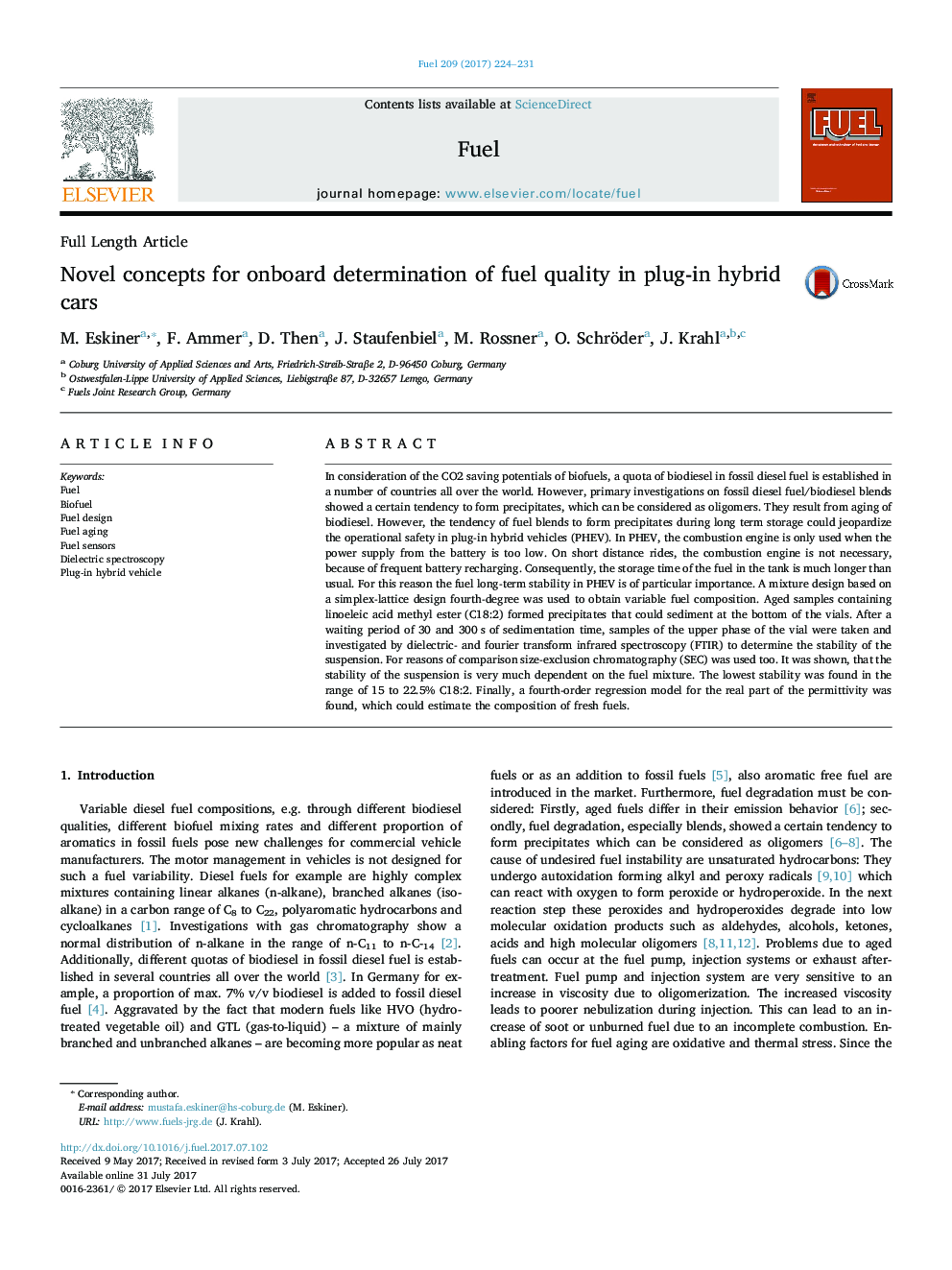| Article ID | Journal | Published Year | Pages | File Type |
|---|---|---|---|---|
| 6473856 | Fuel | 2017 | 8 Pages |
In consideration of the CO2 saving potentials of biofuels, a quota of biodiesel in fossil diesel fuel is established in a number of countries all over the world. However, primary investigations on fossil diesel fuel/biodiesel blends showed a certain tendency to form precipitates, which can be considered as oligomers. They result from aging of biodiesel. However, the tendency of fuel blends to form precipitates during long term storage could jeopardize the operational safety in plug-in hybrid vehicles (PHEV). In PHEV, the combustion engine is only used when the power supply from the battery is too low. On short distance rides, the combustion engine is not necessary, because of frequent battery recharging. Consequently, the storage time of the fuel in the tank is much longer than usual. For this reason the fuel long-term stability in PHEV is of particular importance. A mixture design based on a simplex-lattice design fourth-degree was used to obtain variable fuel composition. Aged samples containing linoeleic acid methyl ester (C18:2) formed precipitates that could sediment at the bottom of the vials. After a waiting period of 30 and 300Â s of sedimentation time, samples of the upper phase of the vial were taken and investigated by dielectric- and fourier transform infrared spectroscopy (FTIR) to determine the stability of the suspension. For reasons of comparison size-exclusion chromatography (SEC) was used too. It was shown, that the stability of the suspension is very much dependent on the fuel mixture. The lowest stability was found in the range of 15 to 22.5% C18:2. Finally, a fourth-order regression model for the real part of the permittivity was found, which could estimate the composition of fresh fuels.
